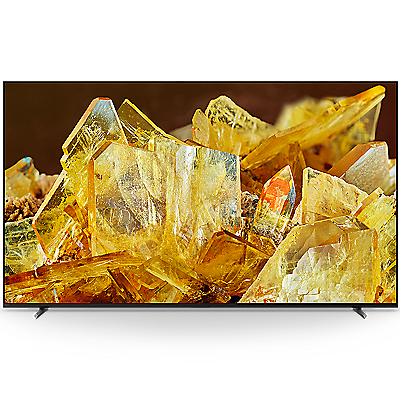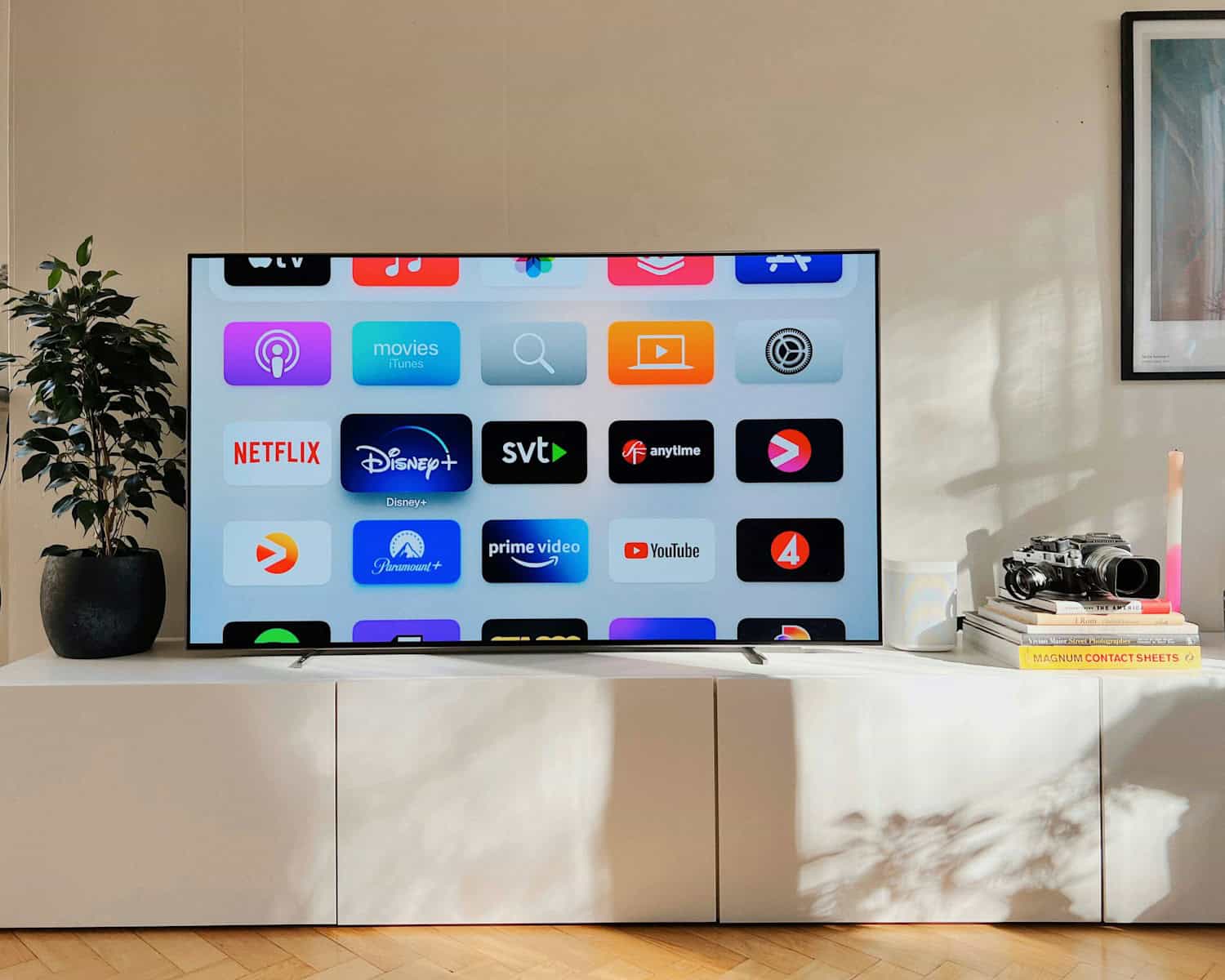Looking for a new TV can be overwhelming with all the options available today. A 50-inch smart TV offers the perfect balance between screen size and room fit for many homes. These TVs come loaded with features like 4K resolution, HDR support, and built-in streaming capabilities from brands like Samsung, Roku, and others.
The best 50-inch smart TVs provide excellent value, typically ranging from $300-500 for quality models that deliver sharp picture quality and smart features without breaking the bank. Most current models feature 4K resolution, which gives you crisp, clear images with four times the detail of standard HD TVs. Many also come with voice control options, allowing you to search for content or control your TV without touching the remote.

When shopping for a 50-inch TV, pay attention to the refresh rate (60Hz is standard, while 120Hz offers smoother motion for sports and action movies), connectivity options, and the smart platform. Popular options include Roku TV, which offers a user-friendly interface with access to thousands of streaming channels, and Samsung’s Tizen system, known for its clean design and extensive app selection.
50‑Inch Smart TV Guide
A 50‑inch smart TV is a sweet spot for many living rooms, bedrooms, and apartments — offering a large screen without overwhelming the space. In 2025, the market is full of high-quality options across different budgets.
1. Why Choose a 50‑Inch TV?
- Perfect size for medium rooms (7–10 feet viewing distance).
- Balanced price and performance compared to larger models.
- Easier to mount and move than 65‑inch+ TVs.
- Many now offer premium features like 4K UHD, HDR10+, Dolby Vision, and 120Hz refresh rates.
2. Key Features to Look For
When shopping for a 50‑inch smart TV in 2025, consider:
| Feature | Why It Matters |
|---|---|
| Resolution | 4K UHD is standard; 8K is overkill for 50″ unless future-proofing. |
| HDR Support | Dolby Vision or HDR10+ for better contrast and color. |
| Refresh Rate | 120Hz is ideal for gaming and sports; 60Hz is fine for casual viewing. |
| Smart OS | Google TV, Tizen (Samsung), webOS (LG), Fire TV, or Roku TV — choose based on app preference. |
| HDMI 2.1 Ports | Required for PS5/Xbox Series X 4K@120Hz gaming. |
| Audio | Look for Dolby Atmos or eARC support for better sound. |
| Panel Type | OLED (best picture), QLED/Mini‑LED (bright and colorful), or standard LED (budget). |
3. Best 50‑Inch Smart TVs in 2025
1. Samsung QN90D Neo QLED

- Panel: Mini‑LED QLED
- Smart OS: Tizen
- Highlights: Exceptional brightness, great for bright rooms, strong HDR performance.
- Best For: Mixed use (movies, sports, gaming).
2. LG C4 OLED (48″ or 50″ class)
- Panel: OLED
- Smart OS: webOS
- Highlights: Perfect blacks, infinite contrast, HDMI 2.1 on all ports.
- Best For: Movie lovers and gamers who want the best picture quality.
3. Sony Bravia X90L

- Panel: Full‑Array LED
- Smart OS: Google TV
- Highlights: Excellent motion handling, accurate colors, strong gaming features.
- Best For: Sports and streaming fans.
4. TCL QM8 Mini‑LED
- Panel: Mini‑LED QLED
- Smart OS: Google TV
- Highlights: High brightness, great HDR, budget-friendly for a premium panel.
- Best For: Value shoppers who still want top-tier visuals.
5. Hisense U8N

- Panel: Mini‑LED QLED
- Smart OS: Google TV
- Highlights: Superb brightness, Dolby Vision IQ, competitive price.
- Best For: All-around performance at mid-range cost.
4. Budget Picks
- Toshiba C350 Series (Fire TV) — solid 4K HDR performance under $400.
- Vizio V‑Series — affordable with decent smart features.
5. Buying Tips
- Check viewing distance: For 50″, 7–10 feet is ideal.
- Consider wall mounting: Look for VESA compatibility.
- Read recent reviews: Model performance can vary year to year.
- Watch for sales: Black Friday and back-to-school season often have big discounts.
6. Quick Comparison Table
| Model | Panel | OS | HDR | Refresh Rate | Gaming Features |
|---|---|---|---|---|---|
| Samsung QN90D | Mini‑LED QLED | Tizen | HDR10+, HLG | 120Hz | HDMI 2.1, VRR |
| LG C4 OLED | OLED | webOS | Dolby Vision, HDR10 | 120Hz | HDMI 2.1, G‑Sync, FreeSync |
| Sony X90L | Full‑Array LED | Google TV | Dolby Vision, HDR10 | 120Hz | HDMI 2.1, VRR |
| TCL QM8 | Mini‑LED QLED | Google TV | Dolby Vision, HDR10+ | 120Hz | HDMI 2.1, VRR |
| Hisense U8N | Mini‑LED QLED | Google TV | Dolby Vision IQ | 120Hz | HDMI 2.1, VRR |
Key Takeaways
- A 50-inch smart TV strikes the perfect balance between screen size and affordability for most living spaces.
- Look for 4K resolution, HDR support, and at least 60Hz refresh rate for the best viewing experience.
- Consider the smart platform interface and app selection that best matches your streaming habits and preferences.
Understanding the Basics of Smart TVs
Smart TVs have revolutionized how we consume entertainment by combining traditional television with internet connectivity. These devices offer streaming capabilities and interactive features that enhance the viewing experience.
Definition and Features of a Smart TV
A Smart TV is a television that connects to the internet, allowing users to access streaming services like Netflix, YouTube, and Hulu without needing additional devices. This connectivity transforms the TV from a passive screen into an interactive entertainment hub.
Most Smart TVs come with a user-friendly interface and a variety of pre-installed apps. These apps can be organized on a home screen for easy access.
Smart TVs typically include features like:
- Voice control capabilities through built-in assistants
- Screen mirroring from smartphones and tablets
- Web browsing directly on the TV screen
- Gaming options without a console
- Smart home integration to control other devices
Many modern Smart TVs also offer personalized recommendations based on viewing habits, making it easier to discover new content.
LED TV vs. OLED vs. QLED
The display technology in your Smart TV significantly impacts picture quality and price. Understanding the differences helps make an informed purchase decision.
LED TVs use light-emitting diodes to illuminate an LCD panel. They’re affordable and energy-efficient but may have less contrast than premium options.
OLED (Organic Light Emitting Diode) TVs have pixels that generate their own light and can turn off completely. This technology creates:
- Perfect blacks
- Superior contrast
- Wider viewing angles
- Thinner screen profiles
QLED (Quantum Dot LED) is Samsung’s technology that uses quantum dots to enhance color and brightness. QLED TVs offer:
- Exceptional brightness
- Vivid colors
- Better durability
- Usually lower cost than OLED
Each technology has strengths depending on your viewing environment. OLEDs excel in dark rooms, while QLEDs perform better in bright spaces.
Key Technologies Behind Superior Picture Quality
Modern 50-inch TVs offer stunning visuals thanks to advanced display technologies. These innovations enhance color accuracy, contrast ratios, and overall viewing experience beyond what was possible just a few years ago.
Exploring HDR in Smart TVs
HDR (High Dynamic Range) technology transforms viewing experiences by displaying a wider range of brightness levels and colors. Unlike standard displays, HDR TVs can show deeper blacks and brighter whites simultaneously, creating more realistic images with greater depth.
Most 50-inch smart TVs now feature HDR10, the basic standard, while premium models offer Dolby Vision or HDR10+. These advanced formats provide dynamic metadata that adjusts brightness scene by scene.
The impact is most noticeable when watching specially-produced HDR content from streaming services like Netflix or Amazon Prime. Sunsets appear more vibrant, while shadowy scenes retain visible details rather than becoming murky patches of darkness.
Quantum Dot Technology Impact
Quantum Dot technology represents a significant leap in display quality for 50-inch TVs. These microscopic semiconductor particles emit specific colored light when activated, creating more accurate and vibrant colors than traditional LED displays.
In QLED TVs, quantum dots are contained in a film layer illuminated by an LED backlight. This arrangement allows for exceptional brightness levels—often 30-40% brighter than standard LED models—making them ideal for bright rooms.
The color volume produced by quantum dot technology is impressive, covering up to 90% of the DCI-P3 color space used in digital cinema. This means viewers see colors closer to what filmmakers intended.
For 50-inch TVs, quantum dot technology provides particular benefits in color accuracy and brightness without the higher costs associated with OLED displays. Many mid-range models now incorporate this technology, offering excellent picture quality at reasonable prices.
The Smart TV Buyer’s Guide
Shopping for a 50-inch smart TV involves considering size benefits, understanding key features, and knowing what to look for in warranty and support options. These factors significantly impact both your viewing experience and long-term satisfaction with your purchase.
Choosing the Right Size: Benefits of a 50 Inch
A 50-inch TV offers an excellent balance between screen real estate and practicality for most living spaces. This size works well in medium-sized rooms, typically providing optimal viewing from 7-10 feet away.
The 50-inch category (which includes 48-49 inch models) has become increasingly popular because it fits comfortably in most living rooms without overwhelming the space. According to recent reviews, models like the Samsung QN50QN90DAFXZA deliver impressive color range in this size category.
One key advantage is versatility – a 50-inch TV can serve as a primary living room display or as a secondary TV in a bedroom or den. Prices have become more reasonable in this size range, offering good value compared to larger screens.
Comparing Smart TV Features
Smart TVs differ significantly in operating systems, app selection, and processing power. Most modern 50-inch models run on platforms like Roku, Google TV, webOS, or proprietary systems from manufacturers.
Key features to compare:
- Resolution: 4K is standard, but check for HDR support (Dolby Vision, HDR10+)
- Panel technology: OLED provides better contrast; QLED/Mini-LED offers superior brightness
- Refresh rate: 120Hz is ideal for gaming and sports
- Connectivity: Look for multiple HDMI 2.1 ports for next-gen gaming
- Streaming capability: Ensure it supports your preferred services
Processing power affects menu navigation speed and streaming performance. Higher-end TVs offer smoother interfaces and fewer buffering issues when streaming 4K content.
Understanding Warranty and Support Options
Standard TV warranties typically cover manufacturing defects for one year, but premium models may offer longer coverage periods. Extended warranties are available but require careful cost-benefit analysis.
When evaluating warranty options, pay attention to:
- Coverage duration
- What’s specifically covered (panel, components, software)
- In-home service availability
- Dead pixel policies (particularly important for OLED panels)
Manufacturer support quality varies significantly. Research response times and support channels (phone, chat, email) before purchasing. Some brands offer premium support options with expedited service or dedicated support lines.
Save the purchase receipt and register your TV immediately. Many warranty claims require proof of purchase date and formal product registration to process smoothly.
Maximizing Your 50 Inch Smart TV Experience
A 50-inch smart TV offers excellent viewing potential when properly configured. Getting the right settings and add-ons can transform your entertainment setup from ordinary to exceptional.
Optimizing Streaming Services on Smart TVs
Start by adjusting your TV’s picture settings for the best quality. Based on expert recommendations, try these settings as a baseline: Contrast = 90, Sharpness = 0. These universal settings work well across most TV brands and provide a more natural picture.
Make the most of your streaming apps by organizing them for easy access. Most smart TVs allow you to rearrange apps on the home screen, so place your most-used services front and center.
Consider these streaming optimizations:
- Internet Connection: Connect via ethernet when possible for stable streaming
- Resolution Settings: Verify your streaming services are set to deliver 4K content when available
- App Updates: Keep apps updated for best performance and security
For families, create separate viewing profiles within streaming services to receive better recommendations based on individual preferences.
Enhancing Viewing Experience with External Devices
External devices can significantly upgrade your 50-inch TV experience. A quality soundbar is perhaps the most impactful addition, as built-in TV speakers often lack depth and clarity.
For gaming enthusiasts, connect a gaming console through HDMI 2.1 ports when available. This supports higher frame rates and better responsiveness for an optimal gaming experience.
Consider these external enhancements:
- Media Streaming Devices: Apple TV, Roku, or Fire Stick can provide better interfaces than some built-in smart systems
- Universal Remote: Simplify control of multiple devices with a single remote
- HDMI Switcher: Useful if your TV has limited HDMI ports
Proper placement matters too. Position your 50-inch TV at eye level when seated, and maintain a viewing distance of approximately 6-10 feet for the best experience without eye strain.
Frequently Asked Questions
Many shoppers have questions when searching for the perfect 50-inch smart TV. Here are answers to common questions that can help make your buying decision easier.
What are the top-rated features to look for in a 50-inch smart TV?
When shopping for a 50-inch smart TV, picture quality should be a priority. Look for 4K resolution, which provides four times the detail of standard HD TVs.
HDR (High Dynamic Range) capability is another important feature that enhances contrast and color accuracy. Popular models like the LG NanoCell 85 offer excellent HDR performance.
Smart features like built-in streaming apps, voice control, and easy smartphone connectivity make daily use more convenient. Many newer models also include gaming-specific features like low input lag and variable refresh rates.
How do smart TV prices vary based on size and brand?
Smart TV prices can vary significantly based on brand reputation and technology. Premium brands like Sony and LG typically cost more than budget options like TCL or Hisense.
A quality 50-inch smart TV typically ranges from $300 to $800, with higher-end models reaching $1,000 or more. Interestingly, 50-inch models sometimes cost more than larger sizes due to lower production volumes.
Display technology greatly impacts price, with OLED and QLED models commanding premium prices compared to standard LED displays.
What are the differences between a 50-inch and a 55-inch smart TV?
The most obvious difference is screen size, with the 55-inch offering about 21% more screen area than a 50-inch model. This can make a noticeable difference in viewing experience, especially in larger rooms.
Price differences between these sizes are often minimal, sometimes just $50-100 more for the larger model. This makes 55-inch TVs popular value choices.
The 50-inch size works better in smaller spaces and may fit more easily on existing furniture. As noted in the Reddit discussion, 50-inch TVs can sometimes be priced higher than 55-inch models due to lower production volumes.
Which brands are known for producing long-lasting smart TVs?
Sony has built a strong reputation for reliability and picture quality that lasts for years. Their Bravia line is particularly well-regarded for durability.
LG and Samsung also rank highly for longevity, with many of their TVs remaining fully functional for 7-10 years. These brands typically use higher-quality components in their circuit boards and power supplies.
TCL has emerged as a reliable budget option, offering good durability at lower price points. Most quality smart TVs today should last at least 5-7 years with proper care.
What are the cost benefits of purchasing a 50-inch smart TV during a sale?
Holiday sales like Black Friday and Cyber Monday typically offer the deepest discounts, often 30-40% off regular prices. This can save buyers $100-300 on mid-range and premium models.
End-of-model-year clearances, usually in spring when new models arrive, provide excellent opportunities to purchase last year’s technology at substantial discounts. The technology differences are often minimal.
Streaming device bundles can add value, with some retailers offering free or discounted streaming devices (valued at $50 or more) with TV purchases.
What additional features do Roku-integrated 50-inch smart TVs offer?
Roku TVs provide a user-friendly interface that centralizes all streaming services in one easy-to-navigate menu. This eliminates the need for an external streaming device.
The Roku platform offers access to thousands of channels and apps, including free content through the Roku Channel. Regular software updates keep the system current for years.
Voice control capabilities allow users to search for content, change inputs, and control playback without using the remote buttons. Many Roku TVs also work with smart home systems like Google Home and Amazon Alexa.







